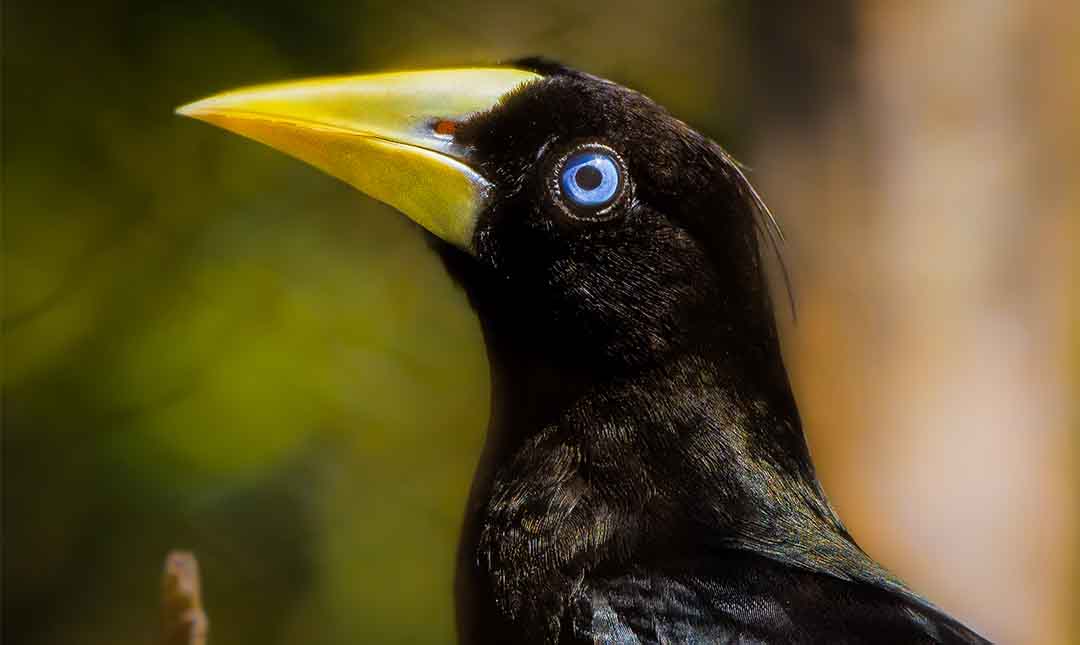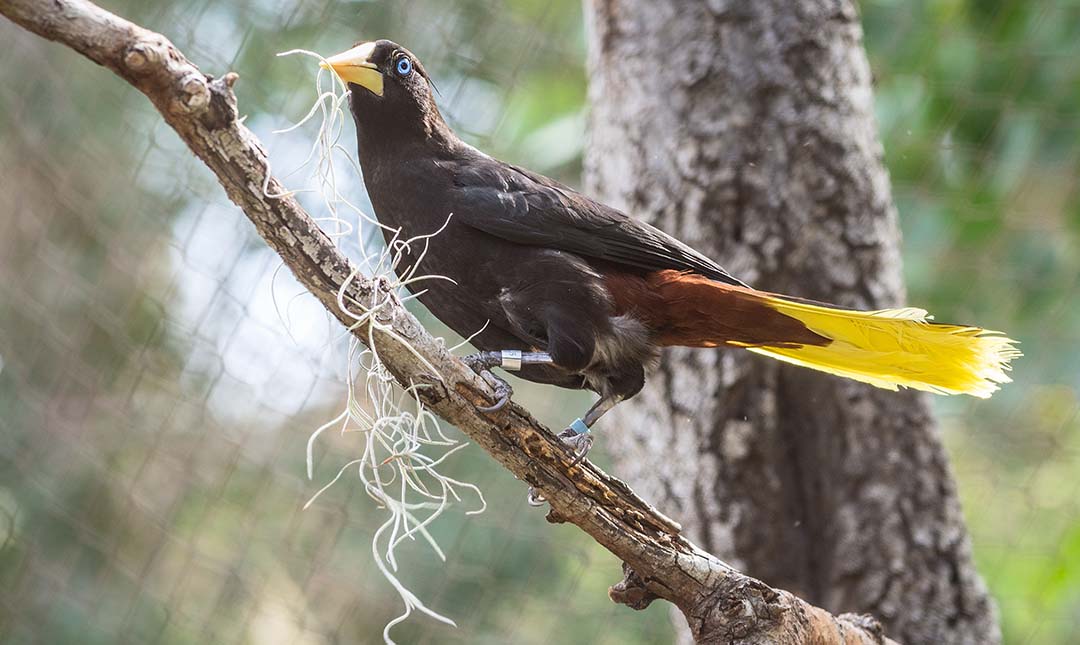About
Oropendolas are related to New World blackbirds and orioles. Relatives include two wild birds often found near the Zoo entrance: the Brewer’s blackbird and the red-winged blackbird. The oropendola gets its name from two Spanish words: oro and pendola which translates to “gold feathers,” referring to the bird’s bright yellow tail feathers.
The nests constructed by oropendolas are among the most unusual in the bird world. Mating begins with males swinging upside down like a pendulum, sometimes completing a full circle and then reversing the motion. Swinging is accompanied by spreading and flapping of the wings and singing to prospective mates. The showiest male attracts many females, and he then mates with them all. Each female weaves a nest out of grasses, palm fronds, and coconut fibers. The nest is shaped like a tear-drop with an entrance at the top and can be three to six feet long. Despite its large size, the structure is suspended by only a few strands of grass or frond fibers and hangs from a high branch. Nests are located in isolated trees to deter predators, which include snakes and monkeys. Females typically incubate two eggs while the males protect the nests. Eggs hatch in two or three weeks. Fledging occurs by one month of age. Oropendolas are gregarious and live in large flocks that can exceed 100 birds. During breeding season, the flock divides into smaller colonies of between one and four males plus 15 to 30 females, but the colonies remain close together for safety.
Although crested oropendola populations are stable, they are scattered, and these birds’ tropical habitat is diminishing due to human encroachment.
Oropendolas are related to New World blackbirds and orioles. Relatives include two wild birds often found near the Zoo entrance: the Brewer’s blackbird and the red-winged blackbird. The oropendola gets its name from two Spanish words: oro and pendola which translates to “gold feathers,” referring to the bird’s bright yellow tail feathers.
The nests constructed by oropendolas are among the most unusual in the bird world. Mating begins with males swinging upside down like a pendulum, sometimes completing a full circle and then reversing the motion. Swinging is accompanied by spreading and flapping of the wings and singing to prospective mates. The showiest male attracts many females, and he then mates with them all. Each female weaves a nest out of grasses, palm fronds, and coconut fibers. The nest is shaped like a tear-drop with an entrance at the top and can be three to six feet long. Despite its large size, the structure is suspended by only a few strands of grass or frond fibers and hangs from a high branch. Nests are located in isolated trees to deter predators, which include snakes and monkeys. Females typically incubate two eggs while the males protect the nests. Eggs hatch in two or three weeks. Fledging occurs by one month of age. Oropendolas are gregarious and live in large flocks that can exceed 100 birds. During breeding season, the flock divides into smaller colonies of between one and four males plus 15 to 30 females, but the colonies remain close together for safety. Although crested oropendola populations are stable, they are scattered, and these birds’ tropical habitat is diminishing due to human encroachment.


STATUS
The crested oropendola is listed as Least Concern by the International Union for Conservation of Nature (IUCN), although populations are scattered and its tropical habitat is diminishing due to human encroachment
HABITAT
Crested oropendolas are found throughout South America, primarily the Amazon River Basin region and other tropical areas. They live in forests, jungles, grasslands, savannas, and marshes.
DIET
Oropendolas are omnivorous and eat a variety of insects, seeds, and fruit.
PHYSICAL CHARACTERISTICS
Body length is 13 to 17 inches and weight ranges from six to 10 ounces—males are heavier than females. Lifespan is up to 20 years in human care.
LOCATION WITHIN THE ZOO
You’ll find this animal in Rainforest of the Americas. See Zoo Map.


